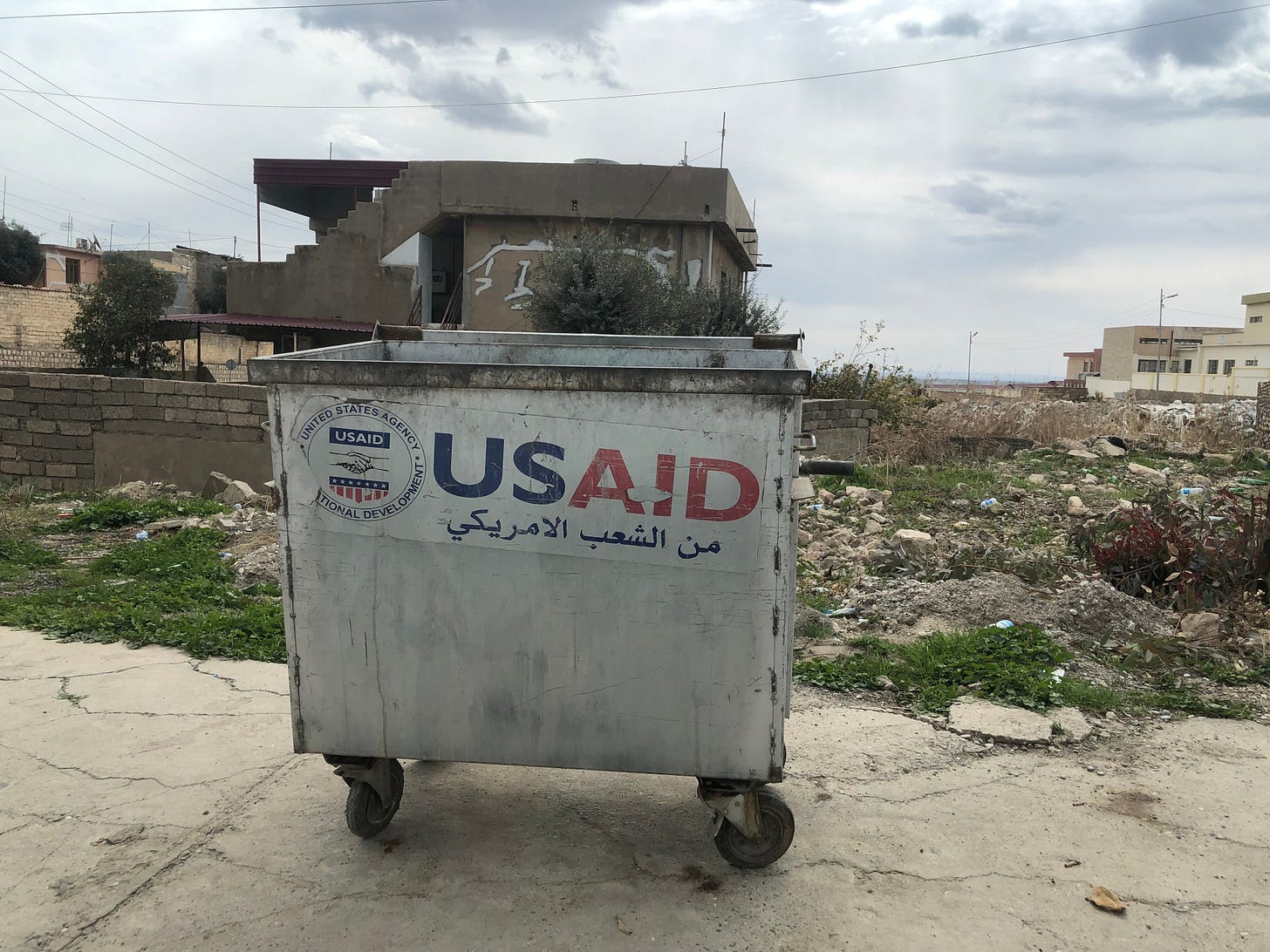The Axis of Submission
For all the triumphalism about defeating its enemies in the Middle East, the United States doesn't have a positive order to replace them with.
America is feeling that it has won the Arab world. With the seeming retreat of Iranian forces from the Levant, there are few obstacles left to the United States imposing its will on the region.
“Our approach has shifted the balance of power in the Middle East, through this combination of support for our partners, sanctions, diplomacy, and targeted military force when necessary. We now see new opportunities opening up for the people of Syria and for the entire region,” President Joe Biden gloated on Sunday. “It's also an opportunity, though far from certain, for a more secure and prosperous Middle East where our friends are safe, and our enemies are contained.”
Lina Khatib, head of the Middle East Institute at London’s School of Oriental and Asian Studies, even compared the fall of the Syrian government to the collapse of the Soviet bloc in 1989. “The defeat of Iran’s revolutionary project will pave the way for widening the scope of normalization between Arab countries and Israel on the basis of shared business, political, and security interests,” she wrote in Foreign Policy. “Just as the Cold War ended with the defeat of communism, decades of confrontation in the Middle East will end with the defeat of the resistance ideology.”
The Axis of Resistance has been replaced with an Axis of Submission — and submission to what, exactly? No need for speculation, because the answer is already in front of us, in places where the United States or its allies already have absolute power. As I wrote for The American Conservative today:
In southern Lebanon, it means to demolish every village within reach, including Christendom’s ancient heritage, and to put the population under the semi-permanent surveillance of killer drones. In Gaza, even on paper, Israel’s “day-after” plan is a horror of horrors: starving Palestinians herded into “humanitarian bubbles” and subjected to communist-style brainwashing. In practice, Israeli policy for conquered territory has been and continues to be gangster rule. Israeli soldiers have been filmed (or filmed themselves) shooting unarmed civilians waving white flags, executing the elderly at home, burning down houses, looting women’s lingerie, gang-raping captives, and more.
The other members of Washington’s Axis of Misery have been similarly destructive to the societies over which they have power. Saudi Arabia and the United Arab Emirates countered “Iranian influence” in Yemen through starvation, terror bombing, mercenary assassinations, and proxy militias no less predatory than Iran’s allies. What finally reigned in the Gulf states’ ambitions there was simply hitting the limits of their hard power. In Sudan, where the Gulf powers do not even have the excuse of Iranian meddling, the United Arab Emirates has profited from its investments in parasitic rapist militias. And as icing on the cake, the Saudi-Emirati coalition has shuttled mercenary units containing child soldiers between Yemen and Sudan.
…
Lest we forget, the “Iranian proxy network” in Iraq is itself a result of catastrophic American success. It was the United States that dismantled the Iraqi government, handed over pieces of the state to religious paramilitaries, and unleashed unlimited sectarian war. Iran simply managed to buy off U.S. clients in the country. People whose life’s work was to destroy an independent Iraq now write about promoting “Iraqi sovereignty” for the Washington Institute for Near East Policy, simply because they’ve lost control of what they created.
(I highly recommend reading the whole thing.)
One estimate, often waved around by U.S. officials, stated that Iran spent $16 billion from 2012 to 2018 on propping up its Axis of Resistance in Iraq, Syria, Lebanon, Palestine, and Yemen. The United States dramatically outspent that in one year, throwing $23 billion at its proxy wars from October 2023 and October 2024. Maintaining an Axis of Misery is expensive.
These are not just whataboutisms, a way to drown out the horrors of Sednaya with the horrors of Sde Teiman. If the triumphalists are right — and I think they are counting their chickens before they hatch— then Iran and its allies are no longer relevant to the future of the region. The model to look at now is what the United States does to captive, defeated populations. And for the past thirty years, especially in the Arab world, the model has been unlimited chaos and tyranny, repression and dependence.
That is where the 1989 comparisons break down. The United States offered the peoples of Central and Eastern Europe a path to integration, peace, and economic development after the Soviet collapse. The same does not exist for the majority of the Arab world. The Abraham Accords cement the economic power of a handful of small nations, themselves built on a caste of citizens ruling over noncitizens, while the populations around them either stagnate or starve. And those states have gotten less generous with their economic capital, not more, to their neighbors.
It’s not over, though. The Syrian uprising succeeded to the extent that it defied the wishes of the United States and U.S. partners. As economist Adam Tooze points out, the Yemeni attacks on global shipping are a reminder that there are limits to how much wealth can flow through the Red Sea with millions of hungry mouths on each side. And Israel’s political elite seems pathological incapable of consolidating wins; its first reaction to the Syrian revolution was a loud, inflammatory land grab. The same contradictions that the Axis of Submission has to spend billions of dollars glossing over annually aren’t going away.



